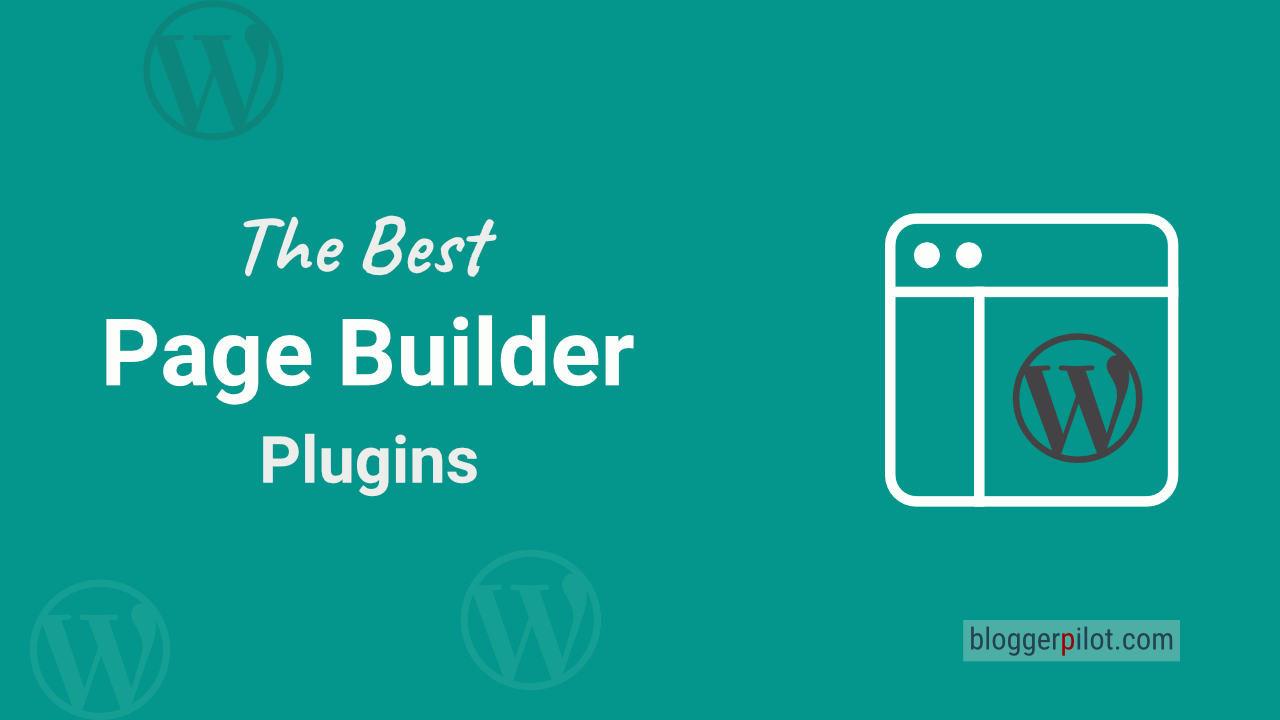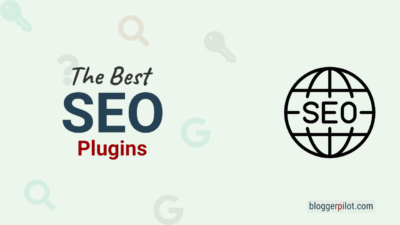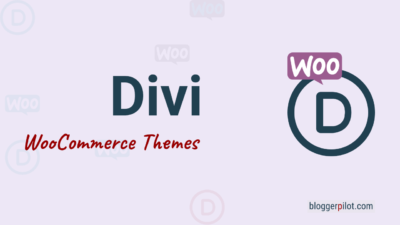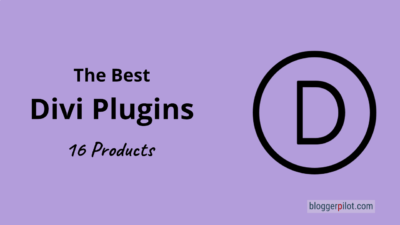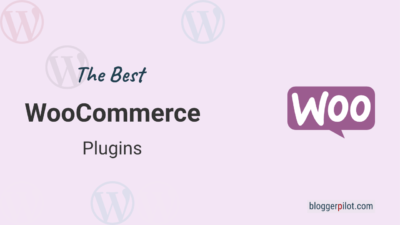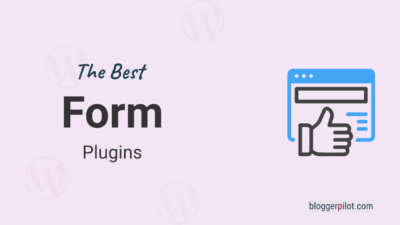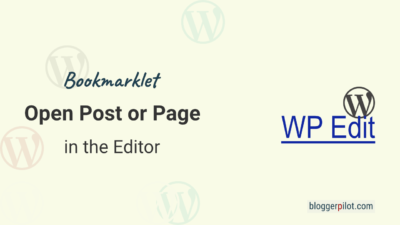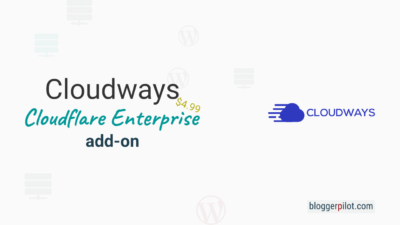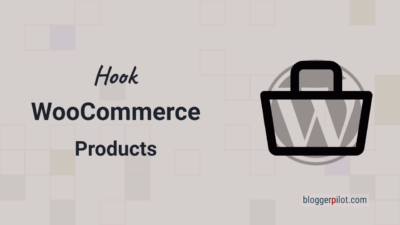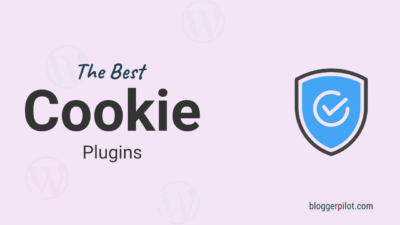The Best WordPress Page Builder 2025
WordPress page builders simplify the creation of impressive article layouts and extensive websites. But there are too many of them now. So, which WordPress page builder is best, and what are the advantages and disadvantages of different WordPress plugins for your website? Let’s find out together!
WordPress page builders are an effective way to create websites without needing programming skills. The best page builders feature a simple drag-and-drop interface, high flexibility, and powerful features that allow you to create responsive and unique websites.
The best WordPress page builder plugin
Following a table with the most important data about the most used WordPress page builders. Each of them I have presented below again in detail.
| Elementor | Divi | Beaver Builder | Gutenberg | |
|---|---|---|---|---|
| Price | Free – Pro $49/year | $89/year – $249 Lifetime | Free – Pro $99/year | Free |
| Usability | very | good | good | improvable |
| Adaptability | high | high | good | good |
| Performance | impairing | impairing | good | very good |
| Compatibility | high | high | high | best |
Still looking for the right page builder for your WordPress website, but unsure which one is the best? On this website, I will introduce you to the best page builders for WordPress in my opinion and tell you where the respective advantages and disadvantages are. With this article, you can quickly and easily find the best page builder for your WordPress website and get started right away.
1. Elementor
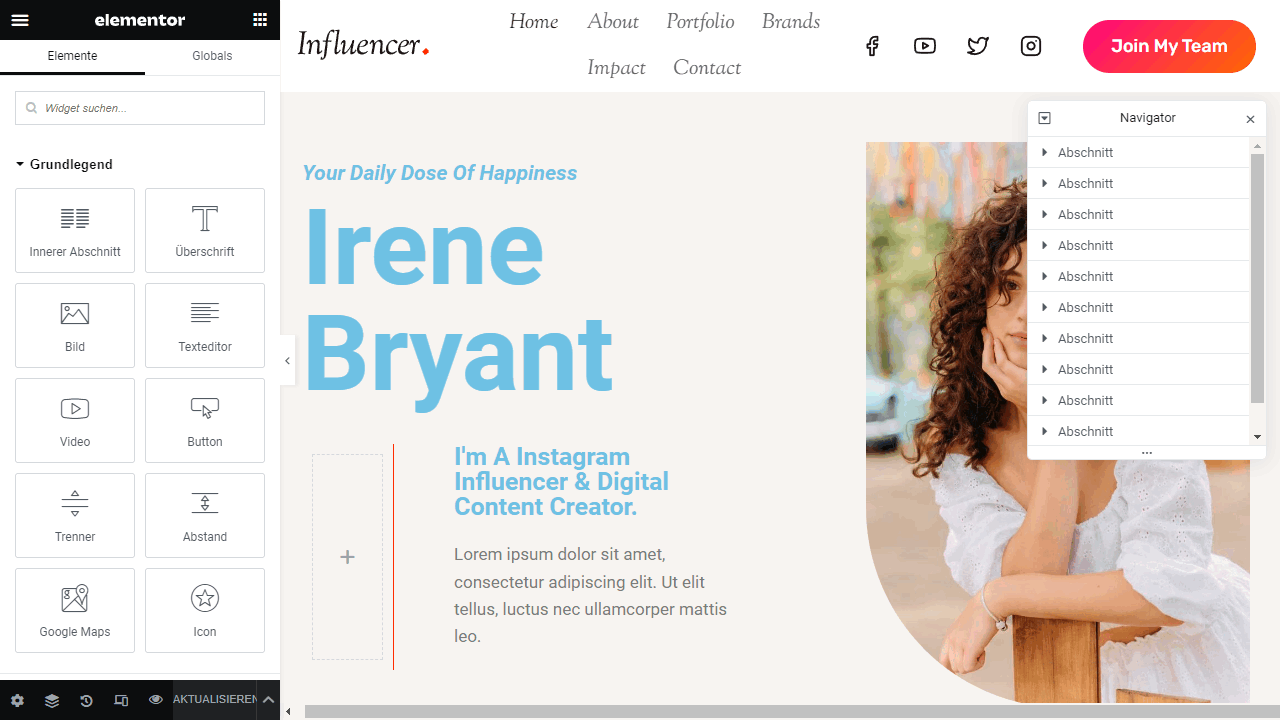
Along with Divi, Elementor is certainly one of the most popular page builders for WordPress currently available. Basically Elementor was from the beginning but also a strong contrast to Divi, which became overloaded and slow with time. Elementor tried to be fast and performant from the beginning and also streamlined the interface, which makes the page builder effortless to use. The latter is actually one of my favorite features. Elementor, despite very extensive possibilities, always seems tidy, clearly structured and less playful than many other page builders. It tries to be less spectacular and more effective. I find this approach to be precisely the right one.
In doing so, Elementor has everything you need for your WordPress website, but also works with WooCommerce. The drag-and-drop editor is easy to use right from the start, and the over 300 templates and more than 100 widgets already offer many clever templates. Elementor also provides a perfectly optimized theme as a small bonus. In addition, the page builder also works completely without WordPress because the Elementor Cloud provides the CMS in the form of managed WordPress hosting. In terms of price, the page builder relies on annual fees, but guarantees excellent support, regular updates and new features occasionally.
The Site Kits are also very cool.
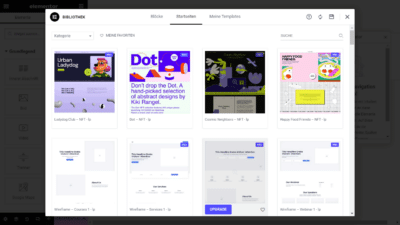

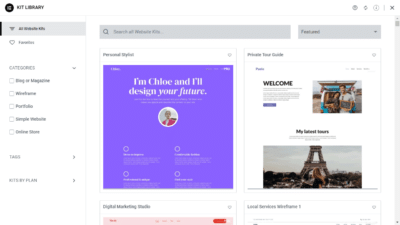
Advantages
- Elementor is very easy to use because everything is obviously designed
- Templates facilitate the creation of impressive websites
- Matching WordPress theme directly integrated to offer even more possibilities
- Significantly more performant than many comparable page builders for WordPress
Disadvantages
- None known
2. Divi
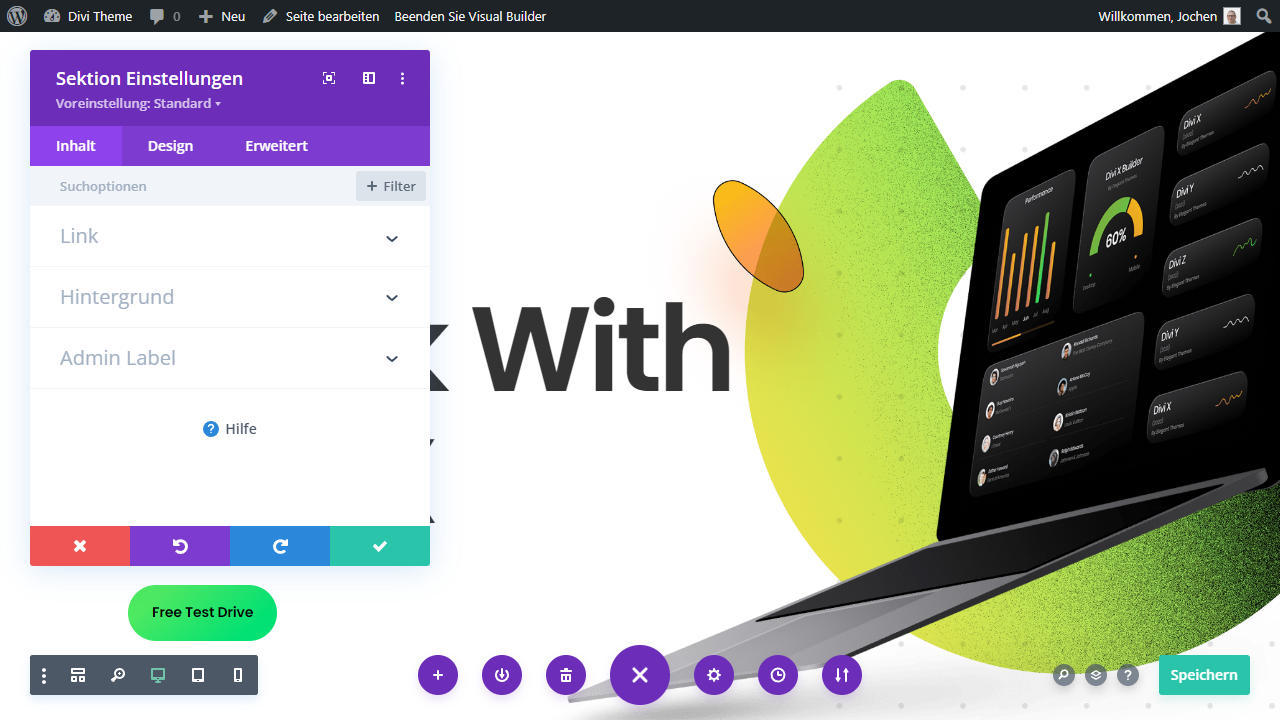
Divi Builder is, and I’m not exaggerating, certainly one of the most comprehensive page builders developed for WordPress. What sounds brilliant at first, however, does not have to be suitable for every website. Sometimes, after all, the supposedly most comprehensive solution is also the slowest or most complicated. In fact, Divi is not exactly perfect in terms of performance, but it can do everything. Whether it’s a blog, landing page, contact page, pop-ups or any other form of content, Divi has the right module for everything, with all kinds of additional settings so that you can remain individual despite the prefabricated patterns. Moreover, Divi is regularly extended and is particularly well maintained.
Divi from Elegant Themes currently has more than 200 elements, over 2,000 layouts, is compatible with many plugins, has a large community and is therefore ideal for those who want to implement everything with their WordPress website. By everything, I mean everything. Divi creates landing pages just as quickly as it creates its own online store based on WooCommerce, has various marketing features (like pop-ups) right in the feature set, and can also integrate efficient contact forms into WordPress. There’s hardly anything Divi can’t handle, which is why the page builder can truly be called one of the most powerful. However, for me personally, Divi was often a bit too fiddly and also the performance suffers from the gigantic feature set, sometimes enormously.

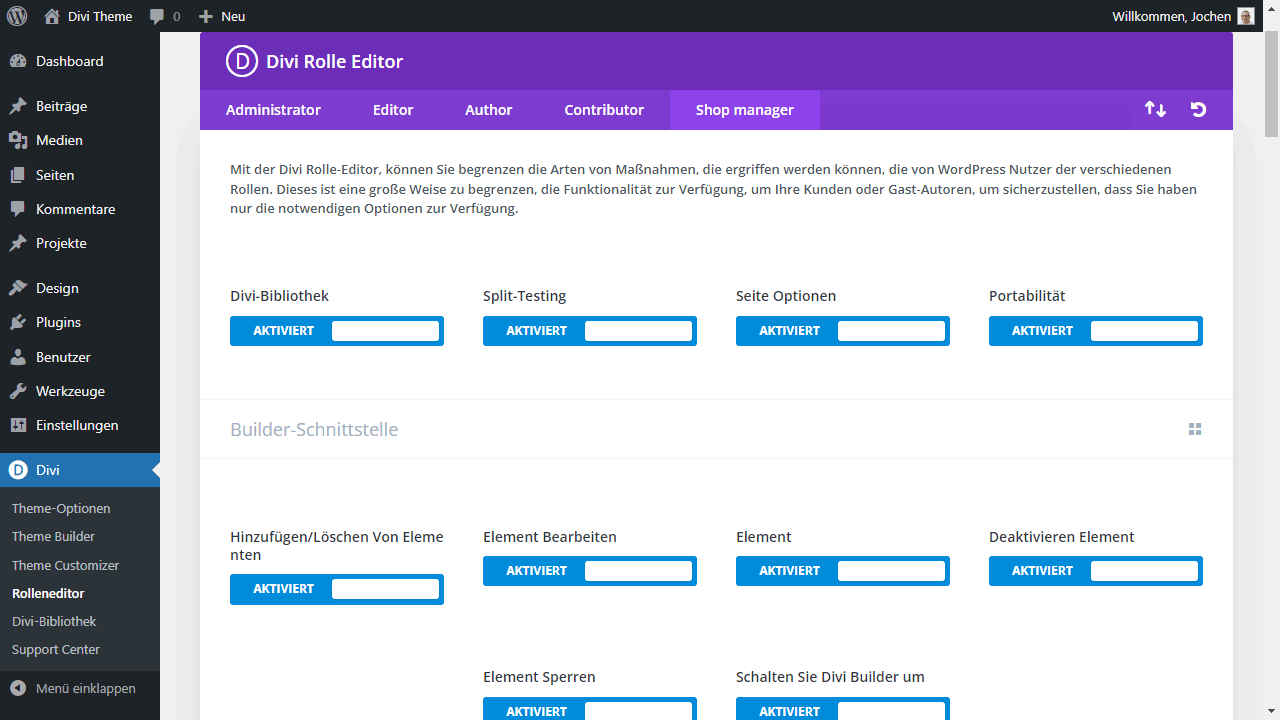

Advantages
- With Divi, just about anything is possible, from landing pages to your WooCommerce store
- Large community that enthusiastically creates new layouts for Divi
- Super fair pricing model and lifetime license
Disadvantages
- Performance and usability suffer from the enormously large scope Divi has to offer
3. Beaver Builder
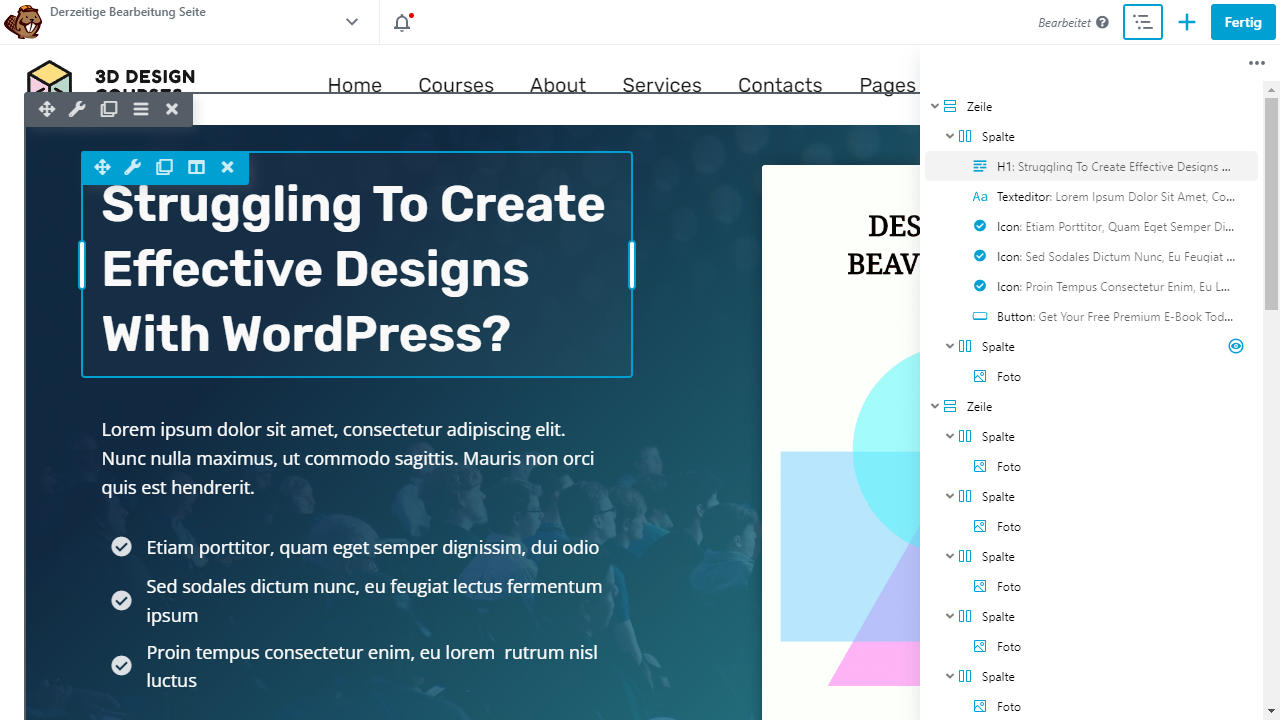
Beaver Builder has been around for quite a long time and is one of the first page builders to gain popularity within the WordPress community. This is because it is very cleverly designed and therefore particularly easy to use.
Elementor is a fast and user-friendly WordPress page builder with countless templates, elements, and its own cloud-based hosting solution. It’s seen as a top choice for both beginners and pros due to its performance and intuitive UI. Divi, in contrast, offers similar features but can feel bloated. Other builders like Beaver Builder and Gutenberg also have their strengths—Beaver is simple and stable, while Gutenberg is native and super lightweight.
Advantages
- Very well-designed and therefore easy to use
- Besides the page builder for WordPress, there is also a theme and even a theme builder available
- Many demo layouts available, which further simplify the design and show what is possible
- Solid software that has been on the market since 2014 and is maintained accordingly well
Disadvantages
- Solid also means that new functions and features cannot be expected here all the time
- Price-wise, there are much more attractive page builders for WordPress
4. Thrive Architect
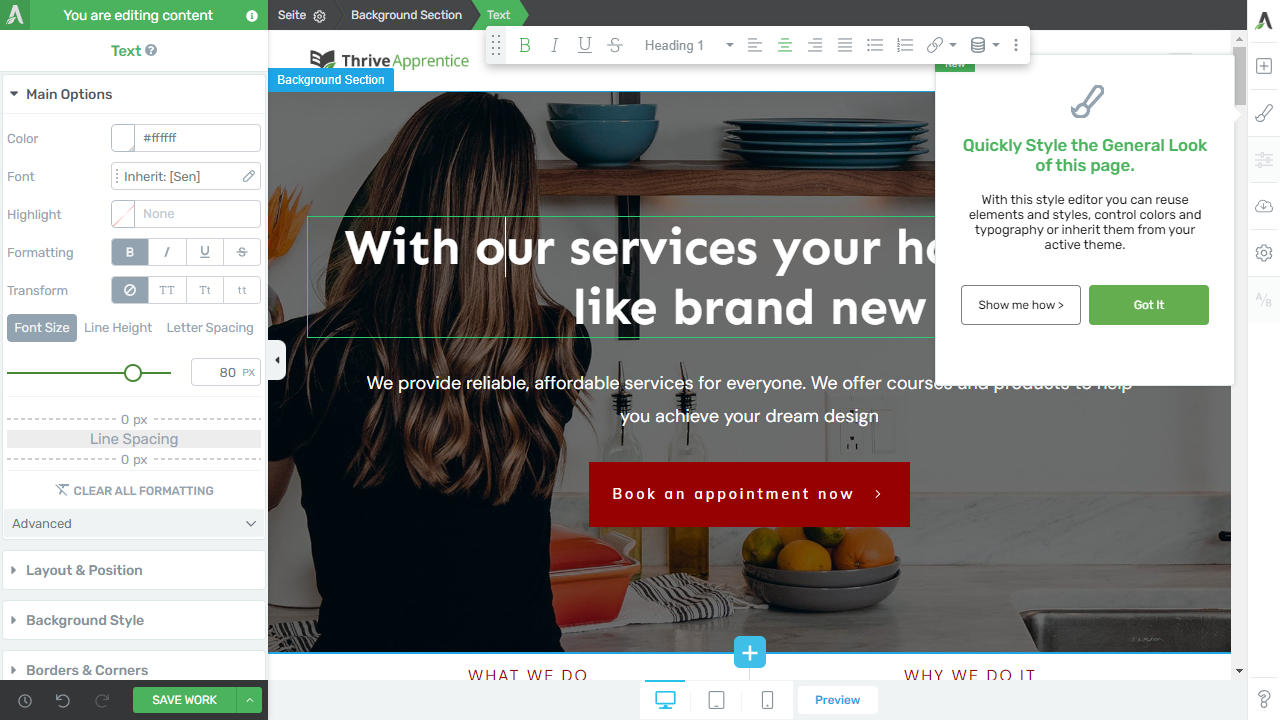
Thrive Architect is Thrive Themes’ page builder and focuses strongly on marketing. It offers 300+ landing page templates and ready-to-use conversion elements like buttons, countdowns, and forms.
A highlight: You can freely place and resize elements without predefined areas—super flexible and easier than many others. It’s the small usability details that make Thrive stand out.
Advantages
- Lots of little convenience features and tweaks in operation that set Thrive Architect apart from other page builders
- Landing page templates and conversion rate optimized elements for marketing
Disadvantages
- None known
5. Bricks

What sets Bricks apart is its focus on speed, performance, and SEO. Whether you’re building simple layouts or using dynamic content, everything runs smoothly. The interface is clean and responsive, making editing fast and frustration-free—especially compared to many slower builders. Perfect if you’ve tried others and want something snappier.
What makes Bricks interesting isn’t just its speed and efficiency — it also comes with a lifetime license. Pay once, get updates forever. That’s rare nowadays with all the subscription models.
Bricks is perfect if you’re on a budget or running a hobby site. Despite its low cost, it still offers over 50 elements, giving you plenty of design flexibility.
Advantages
- More than 50 elements for all types of content
- No subscription model, instead Bricks is available as a one-time purchase with a lifetime license
- WooCommerce Builder is already integrated with Bricks
- Community templates make it easy to build new websites
Disadvantages
- In direct comparison with the “big” page builders for WordPress, lacks many things, including advanced features like popups or shopping carts in WooCommerce
6. Brizy
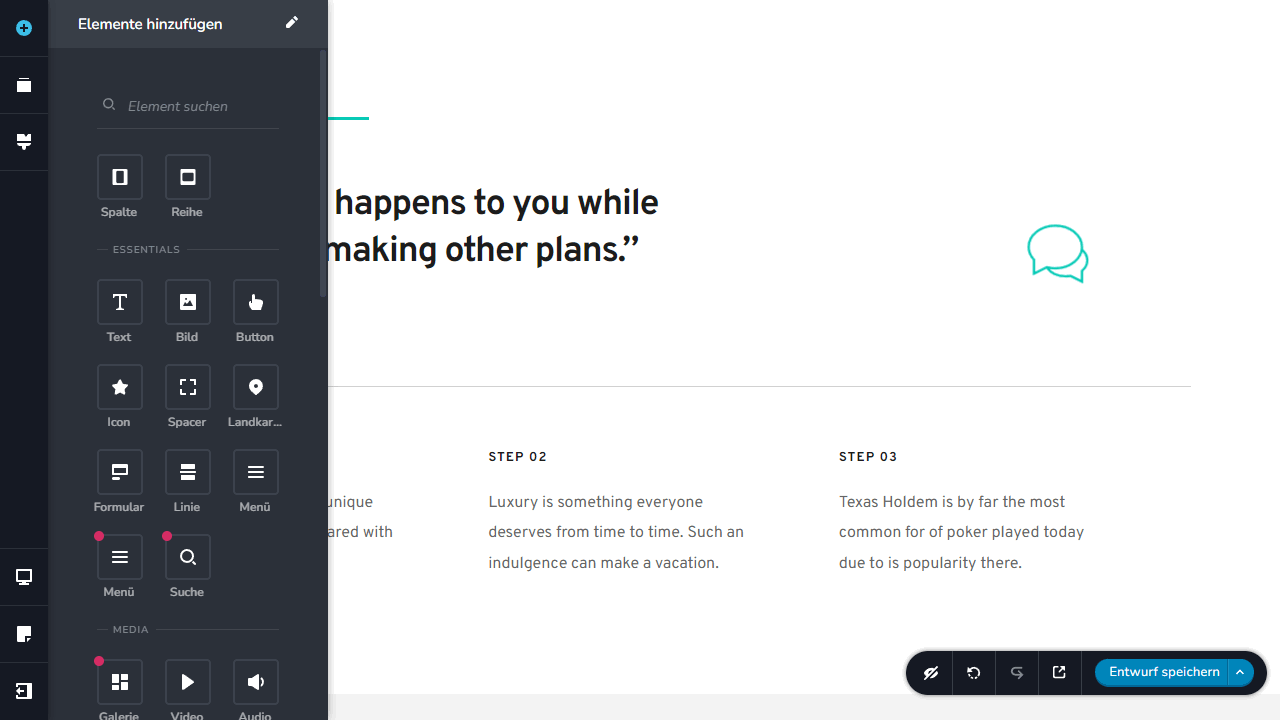
Brizy’s main selling point is its simplicity – it lets you create impressive content fast. It comes with over 500 ready-made blocks and 4,000 icons, plus global styles for easy changes across your whole site. There’s also a cloud version with hosting included.
Brizy is affordable, even with a lifetime license. The free version is very limited (only 24 elements) and more like a demo. Great if you’re on a budget and want something simpler than the big-name builders.
Advantages
- Many templates, icons and ready-to-use blocks
- Cloud version for even easier use
- Reasonable price and fair lifetime license
Disadvantages
- Free version heavily trimmed and more demo than useful alternative
7. Oxygen and Brakedance

I wouldn’t bet on Oxygen anymore because the developer already sells the successor. So better take a look at Brakedance.
For me, Oxygen is an interesting page builder for WordPress, mainly because it has an entirely different focus than its competitors. This is not so obvious at first glance because at first, Oxygen offers the usual range of features. Drag-and-drop editor, easy editing of content, many possible elements that are already available as templates. However, if you take a closer look, you’ll notice that Oxygen was designed to be especially friendly for developers. Hardly any WordPress page builder can be customized and extended by experienced users, as well as it is the case with Oxygen.
Besides this fact, Oxygen has also been programmed very clean. It is fast, remains lightweight and makes few requests. Oxygen’s performance has been a good argument in favor of the page builder from the start, and little has changed in that regard.
It also has a WP Bloat Eliminator to declutter WordPress, which is more familiar from common performance plugins. I like Oxygen, but would not recommend the page builder to beginners. However, if you already know a bit and would like to implement special things or even create your own addons to make your website even more individual, you should definitely take a closer look at Oxygen.
Advantages
- Absolute lightweight among the WordPress page builders
- From the beginning, focus on clean code, little ballast and good performance
- Oxygen is designed to be very developer-friendly and can thus be extended individually.
Disadvantages
- While not complex, it is still a bit more complicated than the common known page builders for WordPress.
8. Page Builder Sandwich

Page-Builder Sandwich is incredibly simple to use—more minimal than most. You place elements via drag-and-drop or use ready-made templates. Settings are basic but sufficient.
Great for simple websites, but limited for complex ones. Also, the price is pretty fair.
Advantages
- Really elementary and easy to use page builder for WordPress
- Few setting options, but the maximum overview in terms of ease of use
Disadvantages
- In its possibilities, Page Builder Sandwich remains far behind other WordPress page builders
9. SiteOrigin
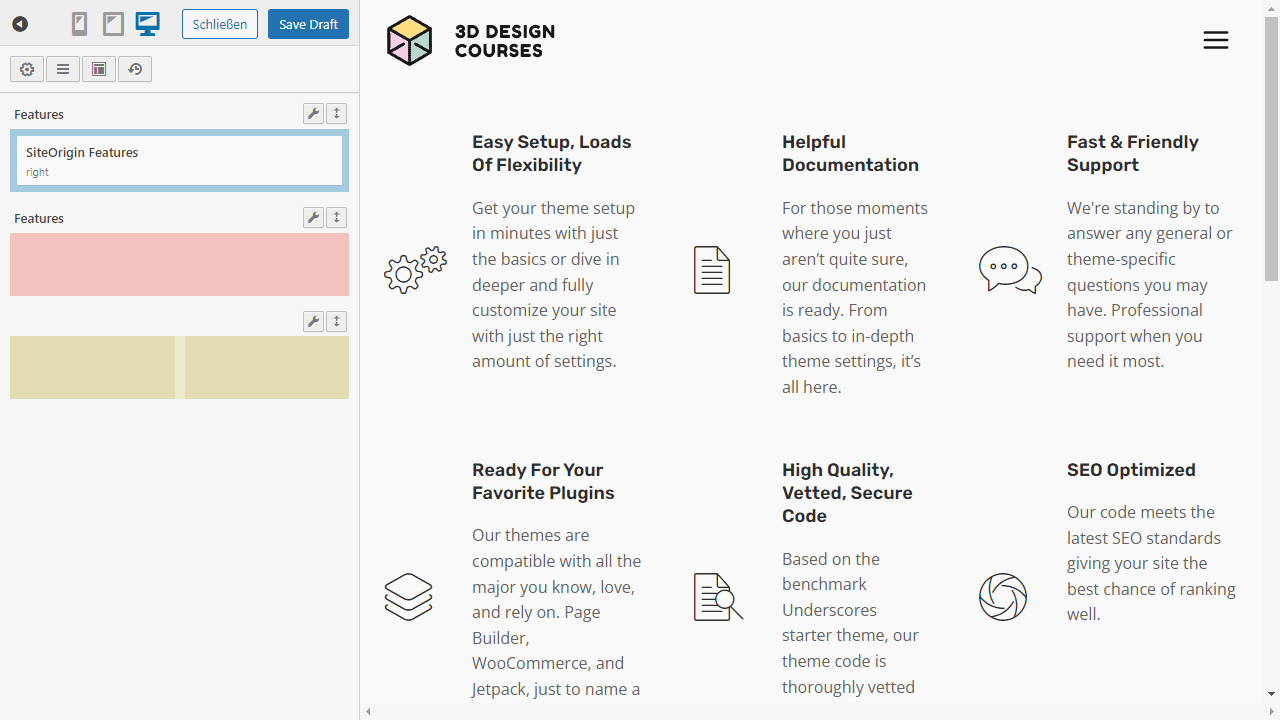
SiteOrigin has been around for a long time and has its fanbase. Compared to newer builders, it feels a bit outdated and basic—especially in its interface. But once you get used to the classic style, it works reliably and performs well.
It supports both frontend and backend editing and works with any theme. The developers also offer custom themes tailored to the builder. Best approach: try it yourself and see if the concept fits your workflow.
Advantages
- Free basic version and also the premium variant is comparatively cheap to have
Disadvantages
- Looks very outdated and not very modern in comparison
10. Visual Composer

The difference of Visual Composer compared to classic page builders, which take care of content building, is mainly that Visual Composer allows you to build entire websites. So, strictly speaking, page builders only concern the content of individual pages, while a site builder also wants to create entire websites. With Visual Composer for WordPress, it is possible to do what is usually only possible with website builders.
With many elements, design templates and styling options, you simply click via drag-and-drop a new website together and keep as a basis still the solid foundation of WordPress. However, Visual Composer makes a lot of effort to offer a little more than the known.
Advantages
- Great to use and with the theme builder, you can easily build whole websites and landing pages
- Very well-thought-out page builder or site builder, which leaves hardly any wishes unfulfilled and is regularly expanded
Disadvantages
- None known
11. droip

Droip is a no-code website builder for WordPress that gives you pixel-perfect design precision—without writing a single line of code. I used Droip to build a portfolio site and was especially impressed by the animation timeline and the ability to work directly with CSS.
The integration of dynamic content through the content manager was incredibly smooth. Droip really shines when you’re working on more complex layouts.
Advantages
- Fully visual workflow with precise, code-level control
- Built-in tools like form builder, SEO management, and media manager reduce third-party dependencies
- LTD for 299.5$ available.
Disadvantages
- The extensive feature set takes some getting used to—especially if you’re switching from simpler builders
12. WPBakery
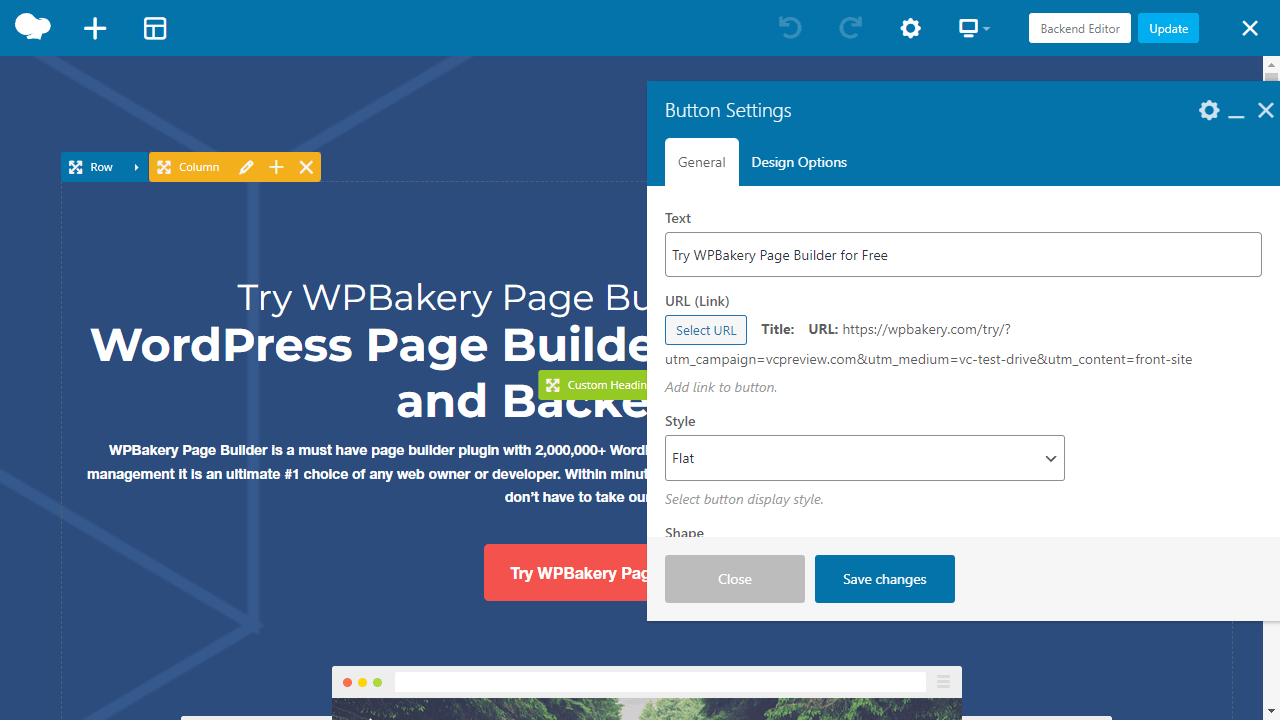
There was a time when WPBakery was already integrated into many WordPress premium themes, which is why it spread so rapidly.
WPBakery is a rather conservative page builder, classic in the best sense of the word, that has good functionality. You should not expect WPBakery to meet the standards that brand new and modern page builders deliver. For that, as mentioned before, the plugin is just too classic.
However, this classic way also has its advantages and remains a bit more reduced and for one or the other perhaps also better to use. Editing is done with WPBakery either directly in the frontend or in the backend.
Advantages
- Fair pricing model and therefore perfect for private blogs or smaller projects
- Very long in development and therefore largely mature and correspondingly stable
Disadvantages
- Seems a bit outdated and therefore operates a bit differently than the newest and most modern page builders for WordPress
13. Gutenberg
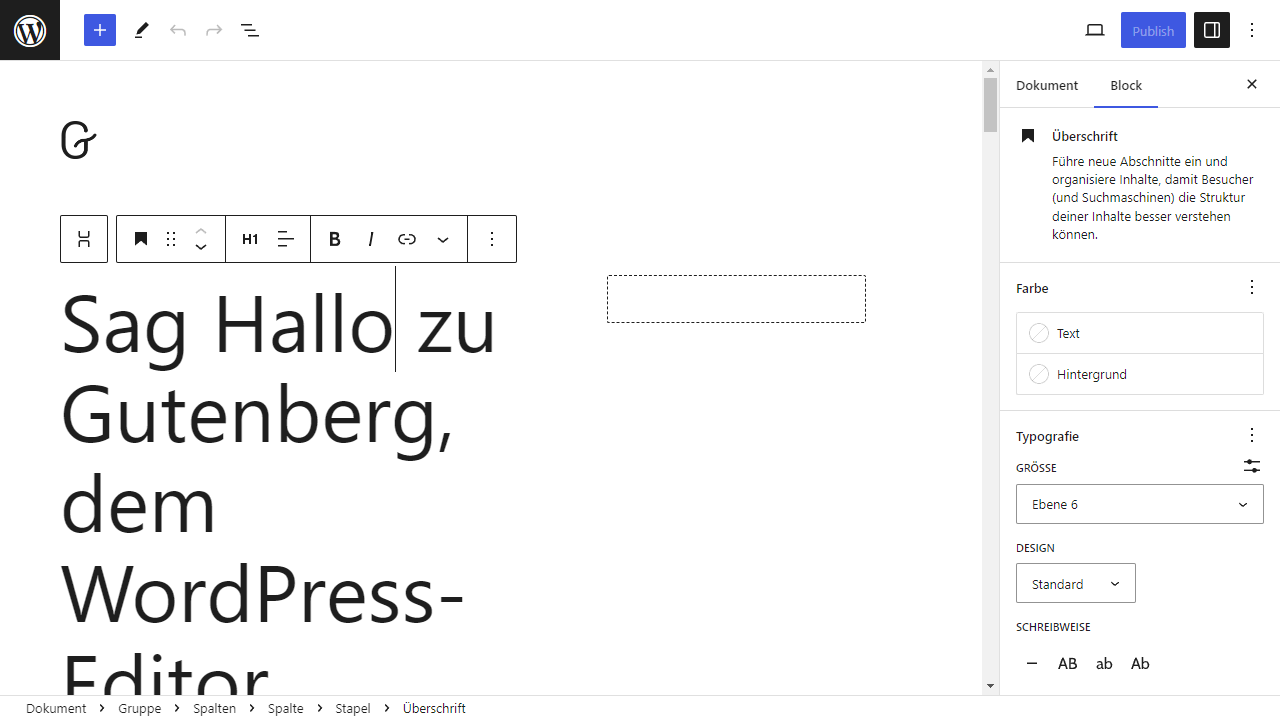
Since WordPress version 5.9 the block editor called Gutenberg is not only for content but also for websites.
The so-called Full Site Editing (FSE) has entered and allows you to create your website completely based on Gutenberg if the respective theme supports Full Site Editing. The Block Editor itself also grants you exactly what was previously reserved for page builders for WordPress. Namely, a click together of content and elements, with different blocks.
All effortless and just so that you can easily create very exciting pages. Websites that are then much more than text deserts with images in between.
Advantages
- The native page builder of WordPress works fast and easy as well as very fast
- Many free and paid addons available that extend the functionality accordingly
Disadvantages
- Very limited in capabilities, so a Gutenberg addon is almost always necessary as a plugin if you want to create more than normal articles
14. Kadence Blocks
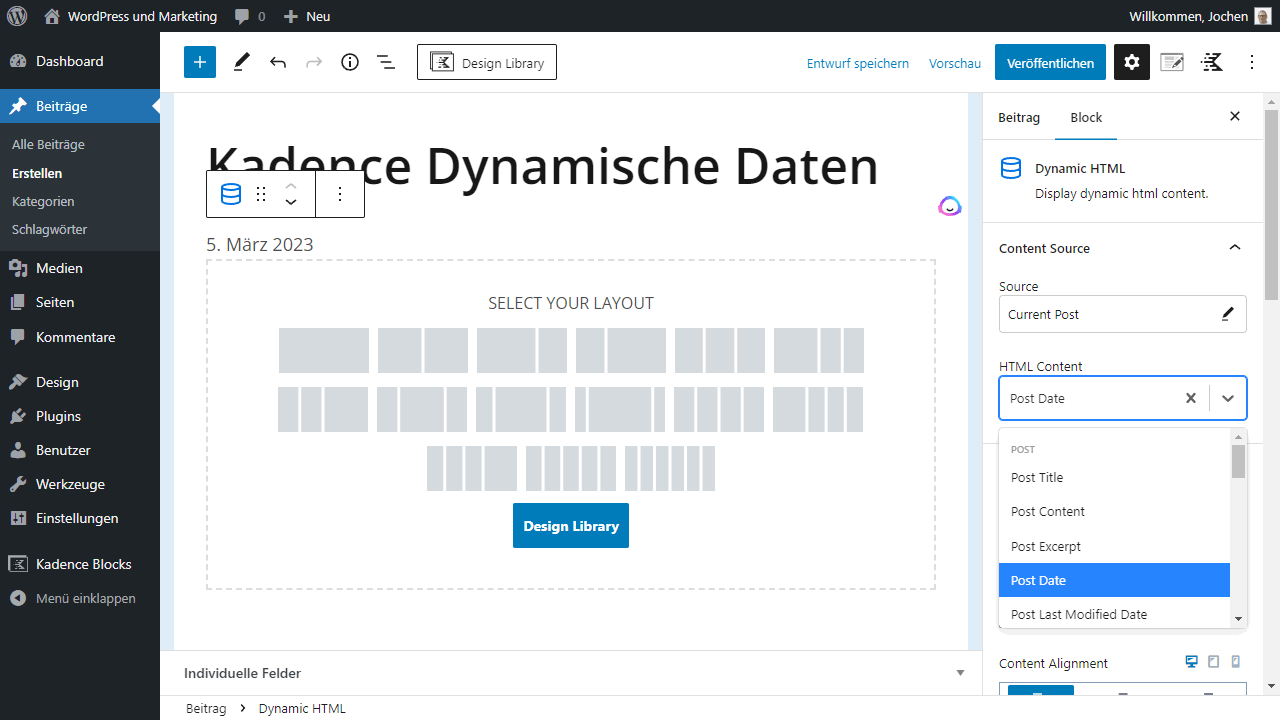
The advantage of the Gutenberg Editor is that it basically produces very clean, as well as light code and is still implemented natively on WordPress. Unlike many page builders, by the way, which try to implement their own extensive frameworks, but then often suffer from performance and compatibility problems. Kadence Blocks adds new Gutenberg blocks, bringing with it more possibilities to create particularly exciting and also impressive websites that skillfully stand out from the competition. Furthermore, there is a lot more to consider with the Kadence Theme.
Kadence Blocks includes 1,500+ icons, layout templates, spacing tools, typography settings, and global styles. The Pro version adds a template library, custom fonts/icons, scroll animations, and more.
Even the free version offers plenty of blocks. Pro unlocks split content, image overlays, sliders, carousels, dynamic content, etc. Kadence focuses heavily on performance—only the CSS and JS needed for active blocks are loaded.
Advantages
- Free version is already very extensive and already well usable for almost all types of websites
- Pricing corresponds to the offered features
- Kadence Blocks puts a lot of emphasis on performance
Disadvantages
- None known
15. GenerateBlocks
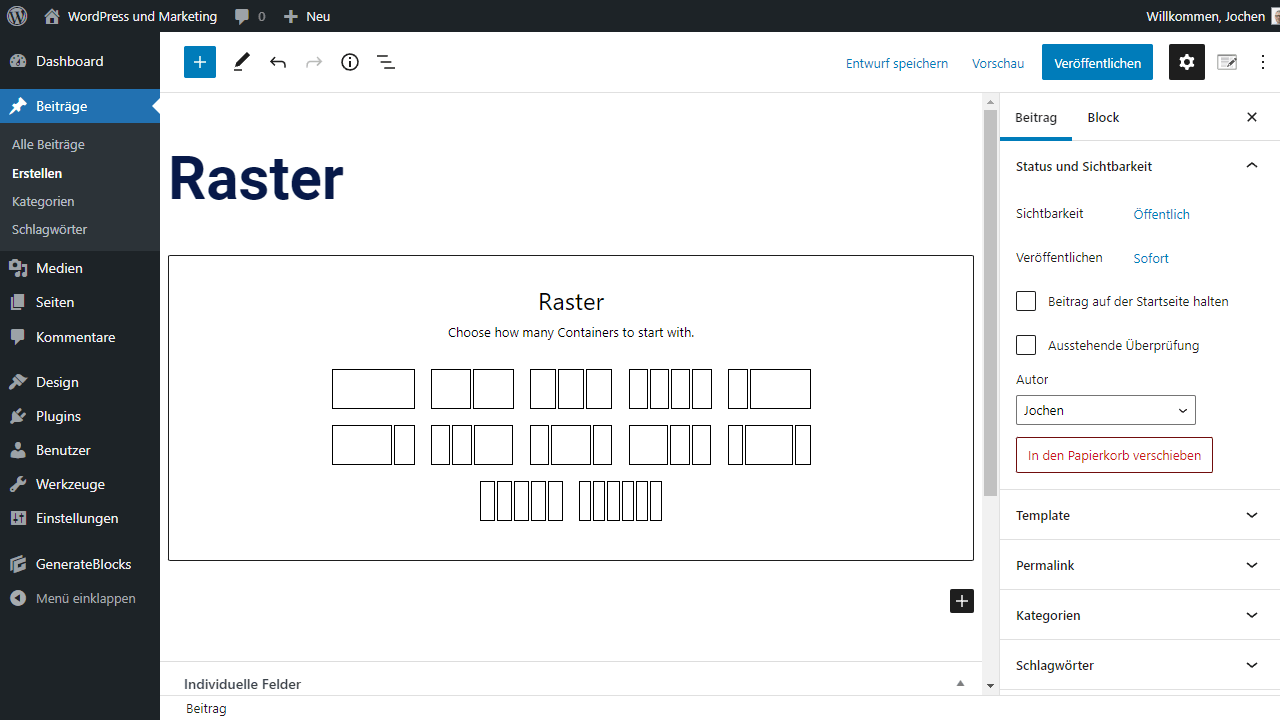
GenerateBlocks is essentially the page builder from GeneratePress, a lightweight and flexible WordPress theme. The combo works seamlessly together, giving you a fast and fully compatible “block-based theme builder.”
GenerateBlocks offers lean, high-performance blocks like containers, grids, buttons, and icons. The free version is solid, while the Pro version adds global styles, patterns, animations, and an asset library. It integrates well with WordPress standards and shines especially when used with GeneratePress. Definitely worth trying, especially since the base version is free.
Advantages
- Perfect if you already use GeneratePress and want to extend or combine it with GenerateBlocks
- Adds new blocks that allow much more in WordPress than the standard blocks from Gutenberg
- Pro version is not mandatory
Disadvantages
- Works also without GeneratePress, but then it seems less intensive and full-featured
16. Genesis Pro

Genesis Pro enhances Gutenberg with useful blocks and stays fast by using native WordPress functions instead of heavy custom code. It works with any theme, but is best paired with the Genesis Framework.
You get reusable sections and full layouts—great for landing pages or pricing tables. Some templates are ready to use and easy to customize. For more features, check the official site.
Advantages
- Includes new blocks for Gutenberg, the Genesis Framework, and all other Genesis themes
- No limits on the number of websites and excellent support for questions or problems
- Relies on WordPress features and is therefore particularly fast and efficient
Disadvantages
- None known
17. Clutch

Clutch isn’t your average WordPress page builder – it’s a radically new approach to visual web design, combining WordPress as the backend with a modern, headless frontend built on Next.js.
I tried it because Elementor and Bricks started feeling too heavy.
Clutch, on the other hand, feels light, thoughtful, and insanely fast. Thanks to Tailwind support and granular components, I was able to control every detail of the design – without writing a single line of CSS.
Performance? Absolutely top-notch.
Advantages
- No plugin dependency thanks to native support for forms, data queries, and styling
- Blazing-fast performance via Next.js, Vercel Edge, and automatic optimization
- Webflow-like design experience with WordPress as the CMS – a dream for modern devs
Disadvantages
- No classic WordPress theme structure – requires a mindset shift
- Documentation is solid but sometimes lacks depth for advanced use cases
What is a WordPress page builder?

A page builder lets you design your WordPress site freely using drag-and-drop—no coding needed. Even before Gutenberg, tools like Elementor made it easy to add grids, buttons, and more with just a few clicks.
These builders work like website kits, but directly inside WordPress, usually via plugin. They don’t replace your theme but enhance it, mainly focusing on content.
Unlike Gutenberg’s Full Site Editing, which only works with supported themes, page builders work on any WordPress site.
Who needs a page builder for WordPress?

Page builders are perfect if you’re not into the technical stuff or just want to work faster. Instead of coding complex themes, agencies use builders and tweak things with plugins.
Drag-and-drop makes it super easy – drop in a button, change text, color, or shadow in seconds. Beginners don’t need to code, pros save time.
Whether you’re a blogger, agency, or big content site – page builders help everyone make stylish pages fast, with cool extras like animations or video pop-ups.
What is the best WordPress page builder?
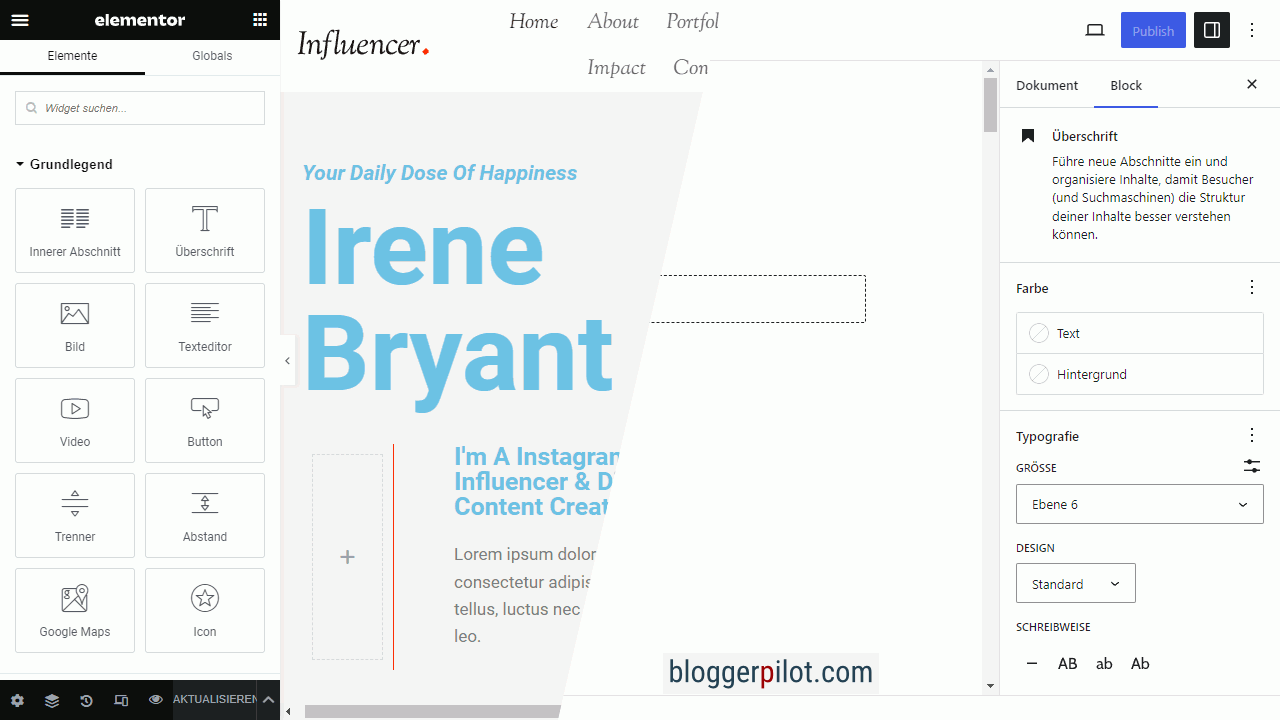
There is no way to answer this question. That’s because almost all modern WordPress page builders have more or less the same features. There is one or the other elaborate feature, which is the unique selling point for some of them, but there are usually no gigantic differences anymore. So how to choose the best WordPress page builder?
For me, the answer to this question is always related to how exactly you use WordPress. Is the WordPress Block Editor already enough for you? Then plugins that add more blocks are always better than a comprehensive page builder. On the other hand, are you looking for an all-inclusive way to design your website? In this case, make sure that the page builder also offers many templates and designs.
Otherwise, Elementor is always the page builder of choice. It offers the necessary features and stability. The choice of pre-built designs is endless, and so are the extensions.
The 16 Best WordPress SEO Plugins 2025 – Improve Your Ranking
The 11 Best Divi WooCommerce Themes and Templates
The Best Divi Plugins and Extensions
14 Best WooCommerce Plugins for Your eCommerce Store
The Best Ecommerce WordPress Plugins (WooCommerce alternatives)
The Best WordPress Form Plugins
Page builder expert
As an online marketing expert with many years of experience, I have managed a variety of projects, always working closely with WordPress. As a result, I’m very familiar with the capabilities and limitations of this content management system.
More recently, I have specialized in WordPress page builders and have gained a profound understanding of the various options and approaches available. My many years of practice in online marketing allow me to consider not only the technical aspects, but also the marketing-related aspects when choosing the best page builder. This way, my recommendations can be both technically sound and strategically thought-out.
Test and try WordPress page builder
That brings me to my conclusion: in the end, the most important thing is that you feel comfortable using the page builder. If the interface feels clunky, confusing, or just not right, it’s probably not the right fit for your workflow or site.
Thankfully, most WordPress page builders offer a money-back guarantee. So take advantage of that—test things out thoroughly before committing, especially if it involves a recurring cost. Personally, I still prefer Elementor. It’s fast, intuitive, and constantly evolving. But in the end, it’s all about what works best for you.
